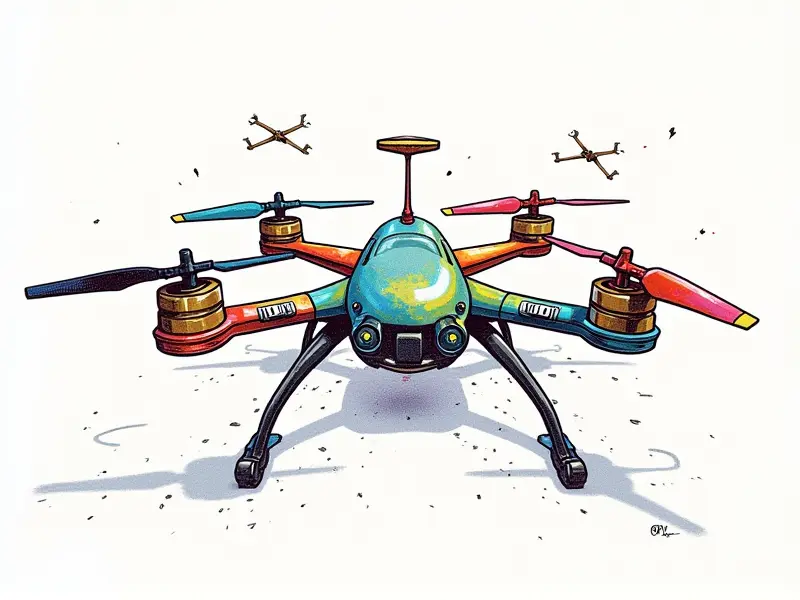What do repair drones do?

How Repair Drones Revolutionize Maintenance
In the rapidly evolving landscape of technological advancements, repair drones have emerged as a game-changing solution in maintenance and inspection operations across various industries. These unmanned aerial vehicles (UAVs) are equipped with sophisticated sensors, cameras, and robotic arms that enable them to perform intricate tasks without human intervention. By leveraging cutting-edge technology, repair drones significantly enhance operational efficiency while reducing costs and improving safety standards.
Benefits of Using Repair Drones for Maintenance
The deployment of repair drones offers numerous advantages over traditional maintenance methods:
- Enhanced Safety: Repair drones can access hazardous or hard-to-reach areas, minimizing the risk to human workers.
- Cost Efficiency: Drones reduce labor costs and eliminate the need for expensive scaffolding or cranes.
- Faster Response Time: Rapid deployment of repair drones ensures quicker identification and resolution of issues.
- Data Accuracy: Advanced sensors provide precise data, enabling better decision-making processes.
Repair Drone Technology Explained
The technology behind repair drones encompasses a range of components that work in harmony to deliver exceptional performance. Key features include:
- Sensors and Cameras: High-resolution cameras and thermal imaging sensors capture detailed images for comprehensive analysis.
- Rapid Data Transmission: Real-time data transmission allows operators to monitor operations remotely.
- Robotic Arms: Equipped with versatile robotic arms, drones can perform repairs autonomously or semi-autonomously.
- Battery Life and Range: Modern batteries provide extended flight times, while advanced GPS systems ensure reliable navigation.
Future of Repair Drones in Infrastructure Maintenance
The future looks promising for repair drones as advancements continue to enhance their capabilities. Emerging trends include:
- AI Integration: Artificial intelligence will enable more intelligent decision-making and autonomous repairs.
- Battery Technology Improvements: Enhanced battery life will allow longer operational hours without recharging.
- Increased Regulatory Support: As regulations evolve, the adoption of repair drones is expected to increase across industries.
What Can Repair Drones Actually Fix?
The versatility of repair drones allows them to address a wide array of maintenance issues, including:
- Structural Repairs: Detecting and repairing cracks in concrete structures, bridges, or buildings.
- Electrical Issues: Inspecting electrical systems for faults and performing minor repairs.
- Pipe Maintenance: Locating leaks, inspecting pipe integrity, and applying sealants to prevent further damage.
Repair Drones: A Game Changer for Inspection
The ability of repair drones to conduct thorough inspections is one of their most significant benefits. They can:
- Increase Efficiency: Rapidly cover large areas, reducing inspection time.
- Improve Accuracy: Provide detailed images and data that enable precise analysis.
- Safeguard Workers: Eliminate the need for dangerous manual inspections.
Real-World Applications of Repair Drones Today
The use of repair drones is already widespread in various sectors, including:
- Construction: Monitoring construction sites and performing structural assessments.
- Pipeline Maintenance: Inspecting underground pipelines for leaks or corrosion.
- Railway Infrastructure: Conducting track inspections to ensure safe rail operations.
The Role of Repair Drones in Industry
In the industrial setting, repair drones play a crucial role by:
- Reducing Downtime: Identifying and addressing issues promptly minimizes production interruptions.
- Enhancing Safety Standards: By performing hazardous tasks autonomously, they protect workers from dangerous conditions.
- Fostering Innovation: Encouraging companies to explore new applications for drone technology.
How Do Repair Drones Conduct Inspections?
The inspection process using repair drones involves several steps:
- Data Collection: Using high-resolution cameras and sensors, drones gather detailed information about the area under inspection.
- Data Transmission: Real-time data is transmitted back to operators for immediate analysis.
- Data Analysis: Advanced software processes the collected data to identify potential issues or areas requiring repair.
Understanding the Functions of Repair Drones
The functionality of repair drones extends beyond mere inspection. They are designed to:
- Conduct Repairs: Utilizing robotic arms and specialized tools, they can perform minor repairs autonomously.
- Maintain Communication: Establishing seamless communication between ground crews and drones for efficient coordination.
Repair Drones: Efficient and Cost-Effective Solutions
The adoption of repair drones offers significant cost savings and operational efficiencies, making them an indispensable asset in modern maintenance practices. Their ability to operate in challenging environments ensures that no detail is overlooked, thereby enhancing overall safety and reliability.
Conclusion
In conclusion, repair drones are revolutionizing the way we approach maintenance and inspection tasks across various industries. With their advanced technology, cost-effectiveness, and unparalleled safety features, they represent a future where human intervention in hazardous areas is minimized while operational efficiency is maximized. As these technologies continue to evolve, it is clear that repair drones will play an increasingly critical role in maintaining our infrastructure.

